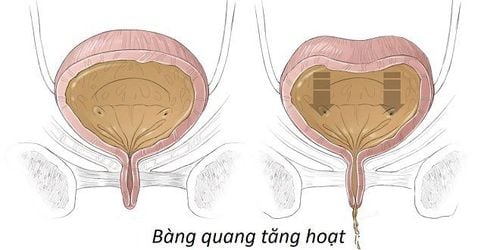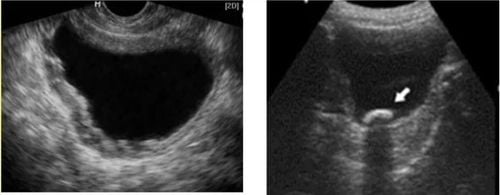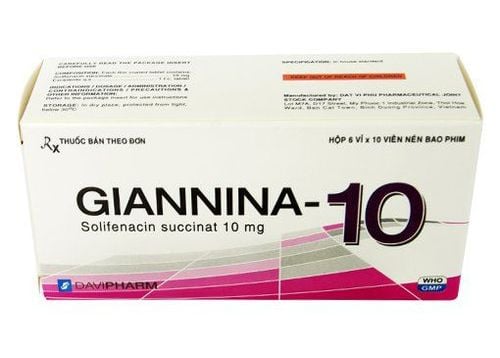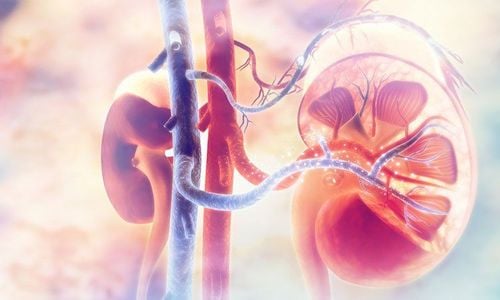This is an automatically translated article.
The article is expertly consulted by Master, Doctor Luu Thi Bich Ngoc - Doctor of Radiology - Department of Diagnostic Imaging and Nuclear Medicine - Vinmec Times City International General Hospital. The doctor has 06 years of experience in the field of diagnostic imaging.Overactive bladder is a condition in which the bladder is overactive, leading to a sudden and frequent urge to urinate. This condition has a significant impact on the patient's life and activities. To diagnose and detect overactive bladder, it is necessary to conduct paraclinical measures such as urinalysis, bladder ultrasound,...
1. What is an overactive bladder?
Overactive bladder syndrome, also known as OAB syndrome, is an overactive bladder that leads to a sudden and frequent urge to urinate. This condition occurs when the bladder contracts suddenly without control and when the bladder does not fill with urine. Accordingly, when having a urge to urinate, it is very difficult for patients to hold back and lead to uncontrolled urine release. This condition is called urinary incontinence or urinary incontinence. Overactive bladder is a common condition, occurring more often in women than in men.Typical symptoms of overactive bladder syndrome include:
Urgency: the patient is often stimulated to urinate suddenly Frequent urination: frequent bowel movements with a frequency of more than 8 times/day or more more than that. However, the amount of urine each time is not much. Nocturia: waking up to urinate more than once each night Urinary incontinence: urine leaks out before the patient goes to the toilet when there is a feeling of urgency. The cause of overactive bladder syndrome is still unknown. Normally, the organ that makes urine, and urine will gradually pass from the kidney to the bladder through the ureter. When the bladder is full, nerve signals are sent to the brain and create a feeling of needing to urinate, the brain will send a signal from the nerve to the bladder to direct the urethral sphincter to relax, the bladder muscle to contract to expel water. urine exits the body.

Weakened pelvic floor muscles: In women, pregnancy and childbirth can cause the pelvic floor muscles to stretch and weaken. This can cause the bladder to sag out of its normal position. Nerve damage: can be caused by injury or disease, previous pelvic or lower back surgery, multiple sclerosis, stroke, herniated disc, Parkinson's disease,. .. leads to the signals sent to the brain and bladder to discharge urine at the wrong time. Infections: Urinary tract infections can irritate the nerve that directs the bladder and cause the bladder to contract without warning. Diabetes: Patients with diabetes may experience a number of bladder problems such as decreased control of the urethral sphincter, overactive bladder, urinary retention and urinary tract infections. Being overweight: Being overweight or obese increases pressure on the bladder and can also lead to an urge to urinate. Cognitive decline: the aging process makes it difficult for the bladder to receive the signals sent by the brain. Factors that interfere with urine flow: tumors, an enlarged prostate, constipation, or surgery to treat other types of urinary incontinence.

2. Ultrasound of overactive bladder
An overactive bladder ultrasound is one of the most common laboratory tests used to check for problems in the bladder and measure the amount of urine that remains after urinating. In addition, ultrasound also helps to evaluate the condition of the bladder, the causes of tumors or stones if any, to diagnose overactive bladder the patient needs to do some more tests including:Urine test: help detect urinary tract infections or other problems in the urinary tract. Cystoscopy: using an endoscope with a light and camera inserted into the bladder after anesthesia. Endoscopy can help doctors determine if symptoms are caused by abnormalities in the bladder such as: bladder stones, tumors,... Urodynamic measurement: includes control measures Measurements to assess bladder function. Urodynamic measures include: residual urine measurement, urinary flow measurement, bladder pressure measurement. Patients with overactive bladder syndrome can benefit from bladder exercise to improve symptoms. However, in some cases, it is necessary to use medication during treatment to reduce bladder irritation. In addition, the patient needs to maintain a healthy lifestyle without smoking and using stimulants, caffeine in tea and coffee, alcohol,...

Currently, bladder ultrasound is a routine technique at Vinmec International General Hospital to diagnose urological diseases in general and bladder diseases in particular. In order to improve the quality of medical examination and treatment, in addition to being fully equipped with modern medical equipment and systems, and international standard ultrasound machines, Vinmec also designs general health checkup packages suitable for each level of health. Age, gender and individual needs of customers with reasonable price policy, including:
Vip general health checkup package Standard general health checkup package In the above health checkup packages, patients will be In-depth examination with a team of specialists and imaging diagnostic methods such as X-ray, blood test, urine test, general ultrasound...
Results of human examination sick will be returned home. After receiving the results of the general health examination, if you detect diseases that require intensive examination and treatment, you can use services from other specialties at the Hospital with quality treatment and services. outstanding customer service.
Please dial HOTLINE for more information or register for an appointment HERE. Download MyVinmec app to make appointments faster and to manage your bookings easily.














